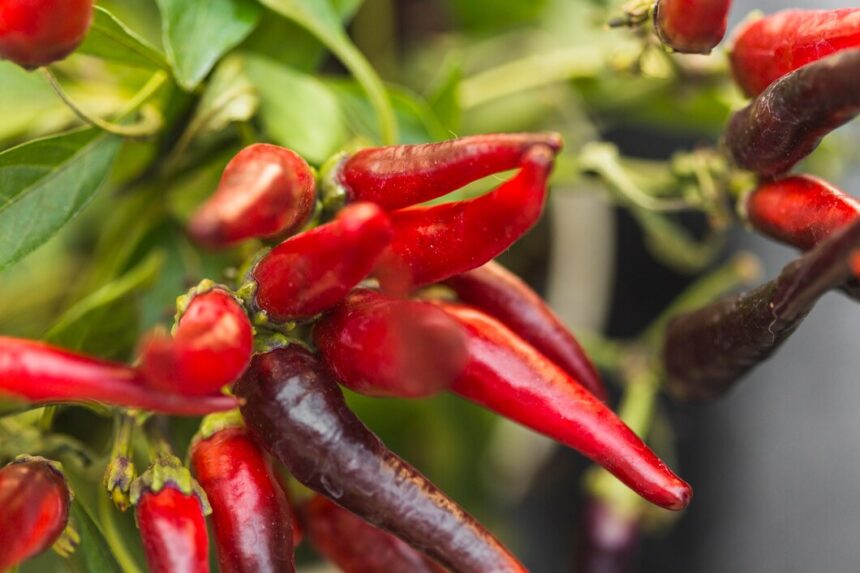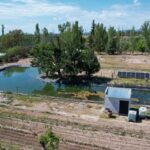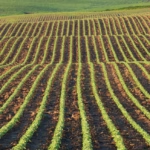Chili peppers, known for their fiery flavor and versatility in culinary applications, are a staple crop in South Africa’s agricultural landscape. Cultivating chili peppers can be rewarding, but maximizing quality and yield requires careful attention to growing conditions, pest management, and harvesting practices. Whether you’re a small-scale farmer or a commercial grower, here are some techniques to help you enhance the quality and yield of chili peppers in South Africa:
- Selecting Suitable Varieties: Choosing the right chili pepper varieties adapted to South Africa’s climate and soil conditions is essential for success. Consider factors such as heat tolerance, disease resistance, and market demand when selecting varieties. Popular chili pepper cultivars in South Africa include Bird’s Eye, Cayenne, Jalapeño, and Habanero, each offering unique flavors and heat levels.
- Optimizing Soil Conditions: Chili peppers thrive in well-drained, fertile soil with a pH range of 5.5 to 7.0. Conduct soil tests to assess nutrient levels and pH, and amend the soil as needed with organic matter, compost, or mineral fertilizers to optimize soil fertility. Mulching with organic materials helps conserve soil moisture, suppress weeds, and maintain even soil temperatures.
- Proper Irrigation Management: Providing adequate and consistent water supply is crucial for chili pepper production, especially during critical growth stages such as flowering and fruit development. Implement efficient irrigation systems such as drip irrigation or micro-sprinklers to deliver water directly to the root zone while minimizing water waste. Monitor soil moisture levels regularly and adjust irrigation schedules based on weather conditions and crop needs.
- Fertilization and Nutrient Management: Applying balanced fertilizers tailored to chili pepper nutrient requirements helps support healthy plant growth and maximize yields. Incorporate nitrogen-rich fertilizers during the vegetative stage to promote leafy growth, and switch to phosphorus and potassium-rich fertilizers during flowering and fruiting stages to enhance fruit development and quality. Avoid excessive nitrogen application, as it can delay flowering and increase susceptibility to pests and diseases.
- Integrated Pest Management (IPM): Implementing IPM strategies helps minimize pest damage while reducing reliance on chemical pesticides. Monitor chili pepper crops regularly for signs of pests such as aphids, thrips, mites, and caterpillars, and use cultural practices such as crop rotation, companion planting, and sanitation to prevent pest buildup. Natural enemies such as predatory insects, birds, and beneficial microorganisms can also help control pest populations effectively.
- Disease Prevention and Control: Chili peppers are susceptible to various fungal, bacterial, and viral diseases that can impact yield and quality. Practice crop rotation, plant disease-resistant varieties, and maintain proper spacing between plants to improve air circulation and reduce disease pressure. Apply preventive measures such as fungicide sprays, sanitation, and removal of infected plant material to manage disease outbreaks effectively.
- Pruning and Training: Pruning chili pepper plants helps improve airflow, light penetration, and fruit production by removing excess foliage and promoting fruit-bearing branches. Pinch off terminal buds to encourage lateral branching and stimulate flower and fruit formation. Use trellises or stakes to support chili pepper plants and prevent fruit from touching the ground, reducing the risk of rot and disease.
- Optimal Harvesting Practices: Harvest chili peppers at the appropriate stage of maturity to maximize flavor, heat, and color. Most chili pepper varieties change color as they ripen, transitioning from green to yellow, orange, red, or purple. Use sharp pruning shears or scissors to harvest peppers carefully, avoiding damage to the plant and fruit. Handle harvested peppers gently to prevent bruising and maintain quality during storage and transportation.
- Post-Harvest Handling and Storage: Proper post-harvest handling practices are essential for preserving chili pepper quality and extending shelf life. Sort peppers based on size, shape, and color, and remove any damaged or diseased fruits. Store harvested peppers in a cool, dry, and well-ventilated environment to prevent mold growth and spoilage. Packaging chili peppers in perforated plastic bags or breathable containers helps maintain freshness and quality during storage and transportation.
- Continuous Learning and Adaptation: Agriculture is a dynamic field, and staying informed about the latest research, innovations, and best practices is key to success. Participate in training programs, workshops, and extension services offered by agricultural organizations, universities, and government agencies to enhance your knowledge and skills in chili pepper production. Experiment with new techniques, varieties, and technologies to continually improve the quality and yield of your chili pepper crops.
By applying these techniques and principles, South African farmers can enhance the quality and yield of chili peppers, meet market demand, and contribute to the country’s agricultural prosperity. With careful planning, attention to detail, and a commitment to sustainable practices, chili pepper cultivation can be a rewarding and profitable venture for farmers across South Africa.







